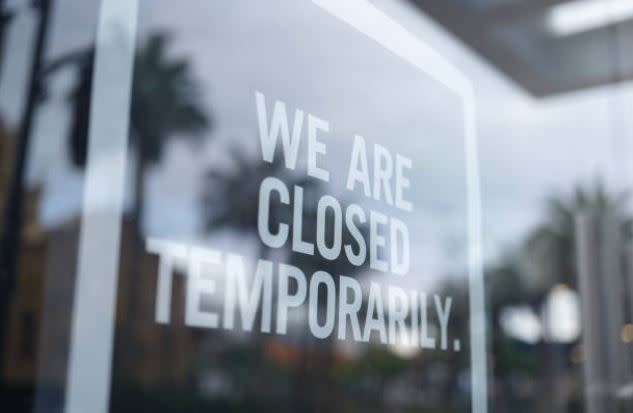The last two weeks have seen a number of new schemes introduced to respond to COVID-19 that impact employers and workers. This insight sets out a summary of the latest changes.
- Permitted Worker Permit Scheme
- Coronavirus (COVID-19) Pandemic Leave Disaster Payment for Victoria
- Stage 4 Victorian restrictions
- $300 Test Isolation Payment
- Paid pandemic leave for aged care workers
- Confirmed COVID-19 cases in Victoria must now be reported to WorkSafe
Permitted Worker Permit Scheme (effective 5 August 2020)
Along with the Victorian Government's Stage 4 restrictions, there are now strict restrictions on which industries can continue to operate. Workers in industries permitted to continue operating must carry a Permitted Worker Permit on their way to and from work.
The Permitted Worker Permit Scheme came into effect at 11:59pm on 5 August 2020. Employers now have the responsibility of issuing permits to their employees. Those who are self-employed, a sole trader, independent contractor or sub-contractor must issue themselves with a work permit and sign as both the employee and employer.
Importantly, an employer must keep a record of all Permitted Worker Permits issued as they may be asked, on request, to produce these records.
Businesses that fail to comply with the scheme may face on-the-spot fines of up to $9,913 and penalties of up to $99,132. Individuals face on-the-spot fines of $1,652 with penalties of up to $19,826.
The permit forms are available for download on the Victorian Government website.
Coronavirus (COVID-19) Pandemic Leave Disaster Payment for Victoria (5 August 2020)
The Commonwealth Government has introduced the Pandemic Leave Disaster Payment for Victorian workers who have been ordered into self-isolation or quarantine.
The one-off $1,500 Pandemic Leave Disaster Payment intends to cover a fortnight of isolation. To be eligible you must have been instructed by the Department of Health and Human Services to self-isolate or quarantine because you have been diagnosed or come into contact with a confirmed case of COVID-19, or have been instructed that a child under the age of 16 in your care needs to self-isolate or quarantine. In addition, to be eligible, you:
- are 17 years or over;
- live in Victoria;
- are likely to have worked during the period of self-isolation or quarantine and are unable to work due to a requirement to stay at home;
- are not receiving any income or earnings from work;
- are not on JobKeeper or other forms of Australian Government income support; and
- have exhausted sick leave entitlements, including any special pandemic leave.
Workers include those that are permanent, casual, part-time, fixed term, and self-employed. Workers do not need to be a citizen or permanent resident to be eligible for the payment.
This new Pandemic Leave Disaster Payment replaces the $1,500 Worker Support payment which had been set up by the Victorian government, meaning workers can't double dip or choose between schemes.
More information on the Pandemic Leave Disaster Payment can be found on the Services Australia website.
Stage 4 Victorian restrictions (effective 2 August 2020)
What does this mean for your business?
With the new Stage 4 restrictions in Victoria, certain industries and businesses will be required to close. Some businesses will be required to shut down all on-site operations; others will be able to operate on either a full or restricted basis as a Permitted Work Premises.
Importantly, if your business is a Permitted Work Premises and is allowed to operate, you are required to implement a COVIDSafe plan by midnight 7 August 2020. The plan must focus on safety, prevention and response in the event a case of COVID-19 is linked to the workplace.
Those businesses that remain open must comply with new criteria including but not limited to:
- keeping records of all workers, subcontractors, customers and clients attending the premises for more than 15 minutes;
- ensuring workers do not work across multiple sites; and
- regularly cleaning shared spaces and facilities.
For full details of your obligations, please refer to the Workplace Directions.
$300 Test Isolation Payment (1 August 2020)
Victorian workers may also be entitled to the Victorian Government's $300 Test Isolation Payment which is intended to cover Victorian workers while they isolate and wait for the results of a COVID-19 test. To qualify, proof of a COVID-19 test on or after 23 July 2020 is required. Workers can only receive one $300 payment in a 30-day period with similar eligibility criteria for the Pandemic Leave Disaster Payment applying. More information is available here.
Paid pandemic leave for aged care workers (effective 29 July 2020)
The Fair Work Commission has announced the introduction of paid pandemic leave to employees employed in the aged care industry and who are covered by one of three awards being the Nurses Award 2010, the Health Professionals and Support Services Award 2020 or the Aged Care Award 2010 (Industry Awards).
The changes, taking effect from 29 July 2020 until 29 October 2020, allow aged care workers, including casuals employed on a "regular and systemic" basis, two weeks' paid leave. To access the entitlement, employees must be in one of the following situations:
- The employee is required by their employer, or the government or medical authorities to self-isolate or quarantine;
- The employee is in isolation or quarantine while waiting for the results of a COVID-19 test; or
- The employee is required on the advice of a medical practitioner to self-isolate or quarantine because they are displaying symptoms of COVID-19 or are suspected to have come into contact with a person suspected of having contracted COVID-19;
- On measures taken by the government or medical authorities in response to COVID-19 (for example closing an aged care facility).
Paid pandemic leave is conditional on the fact an employee must have already taken a COVID-19 test or will take a COVID-19 test as soon as possible.
Employees are not entitled to pandemic leave in situations where:
- An employee is eligible to take paid personal/carers leave instead;
- An employee is able to work remotely or from home;
- An employee returns a positive COVID-19 test result and becomes entitled to workers' compensation benefits; and
- Where an employee is covered by an enterprise agreement they are not entitled to pandemic leave, unless their enterprise agreement specifically incorporates an Industry Award.
To qualify for paid pandemic leave, an employee must provide notice as soon as practicable to their employer. In addition, if an employer so requires, a worker must provide evidence that would satisfy a reasonable person that the leave is being taken for one of the prescribed reasons.
The rates of paid pandemic leave for workers are as follows:
- Full-time employees will be paid at their base rate for the ordinary hours they would have worked had they not been on leave.
- Part-time employees will be paid the greater of the agreed ordinary hours or the average of their weekly ordinary hours for the six weeks preceding the leave.
- Regular and systemic casuals will be paid the average weekly pay received by the employee in the six weeks preceding the period of leave, or where the employee has been employed for less than six weeks, for the duration of their employment.
There is a suite of other awards subject to variation applications to include paid pandemic leave, such as the SCHADS and Medical Practitioners Awards. Stay tuned to see whether these awards will be varied in the same way as those applying to aged care workers.
Confirmed COVID-19 cases in Victoria must now be reported to WorkSafe (effective 28 July 2020)
On 28 July 2020, the Victorian Government introduced the new Occupational Health and Safety (COVID-19 Incident Notification) Regulations 2020 extending incident obligation notifications pursuant to Part 5 of the Occupational Health and Safety Act 2004.
The new regulations require all Victorian employers to notify WorkSafe when they are made aware a worker or independent contractor has been diagnosed with COVID-19.
Please see our previous insight for further reading on this issue.
Our team is actively monitoring and considering the implications of legal and regulatory developments in response to the COVID-19 pandemic. You can find our COVID-19 collection here.
All information on this site is of a general nature only and is not intended to be relied upon as, nor to be a substitute for, specific legal professional advice. No responsibility for the loss occasioned to any person acting on or refraining from action as a result of any material published can be accepted.
 Client portal
Client portal












